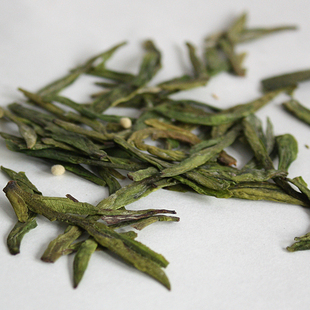It's result from machine processing. Usually if you see many of them, the tea is machine processed. However, I've never seen so many fluffy balls in such small amount of tea in the first picture. That's too much and doesn't look normal. The other pictures look quite normal. The first picture, it almost look like some one hand-removed a lot of leaves from the pile and left a lot of balls there.
The hand-processed long jing doesn't have such fluffy balls, or very few, and not in perfect ball shape. The balls themselves are nothing bad. They are just from the silver tips of the leaves. In early spring leaves, the silver tips are heavy, and there will be quite some fluffy balls in machine processed tea.
The pre-Qingming (especially harvest of the first a few days) authentic Xi Hu Long Jing is rarely machine processed, because there is so small amount. Then when it's close to April 4 or 5 and after, some authentic Xi Hu Long Jing is machine processed too, but most highest end long jing is still hand processed.
Hand processed tea is not always better than machine processed. The Long Jing in Beachape's later 2 pictures (especially the last one), whether Xi Hu Long Jing or not, looks like good tea, at least from the picture.
P.S. I took one more look at the first picture, and am almost sure it's the Huang Pian (yellow flakes) of Long Jing - meaning it's the picked-out older and crushed leaves of Long Jing. So I believe it's a by product of Long Jing - after good leaves are removed, the fluffy balls and crushed leaves are left. Nothing bad about Huang Pian. It's daily drink of many Long Jing farmers. A farmer I know sells the new Huang Pian of this year for roughly $4 per 500g. I won't pay the shipping cost to buy it, but I know it's still so much better than "higher end" Long Jing teabags




